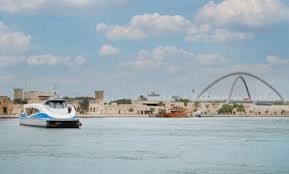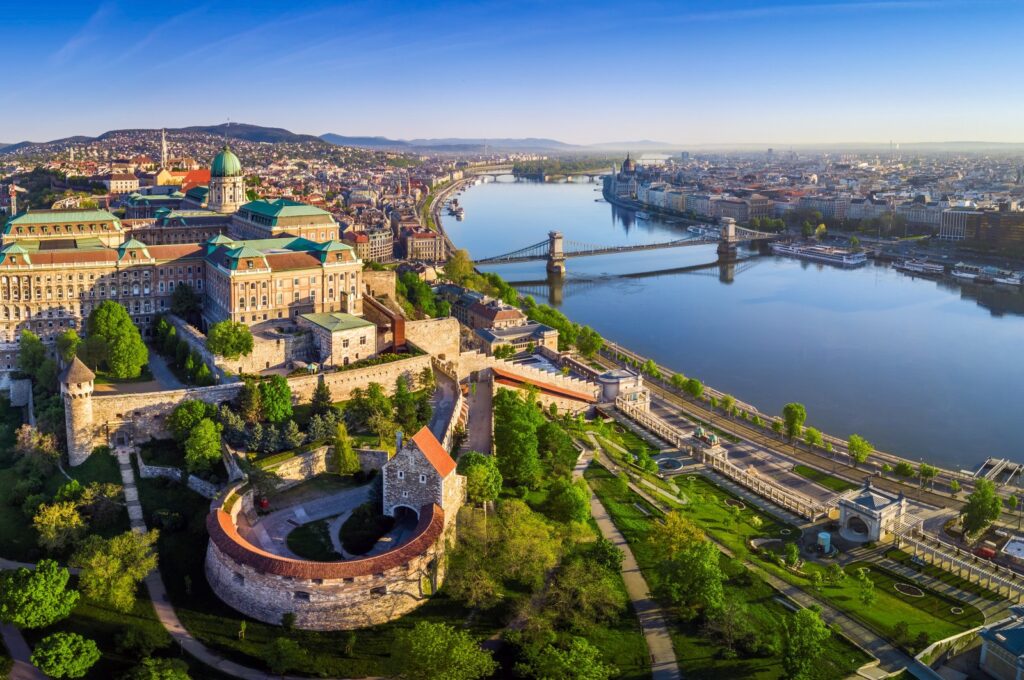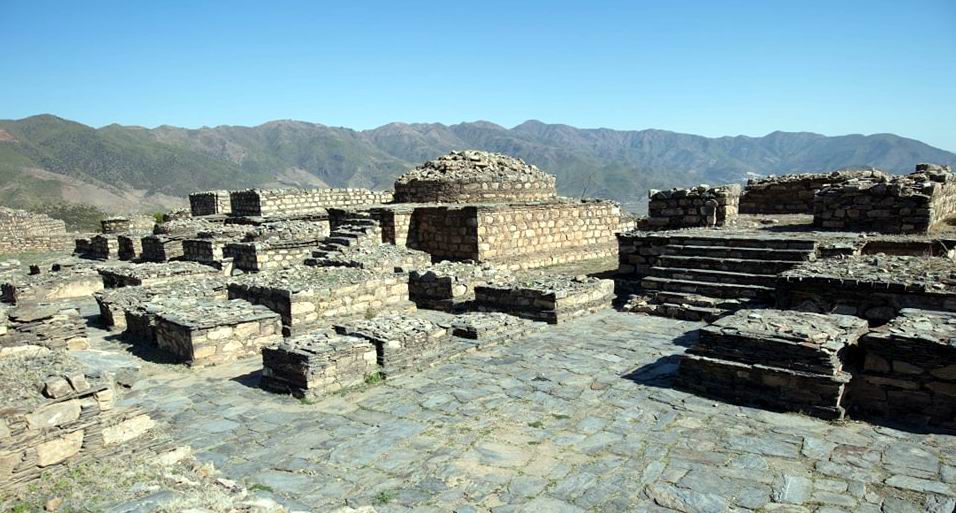
Melanie Swan
On the streets of Yerevan, Armenia’s capital, harsh Soviet structures belie the centuries-old history, rich culture and breathtaking wilderness that this small Caucasian country has to offer.
Home to at least six microclimates, the 30,000-square-kilometre, landlocked territory of only three million people offers scenery and outdoor adventures that are unrivalled even in much larger countries.
Armenian painter Martiros Saryan once said that to experience the soul of Armenia, one has to leave Yerevan. And travelling around the country, I understand why.
During Soviet rule, the capital’s heritage was all but razed, but leave Yerevan and Armenia’s unique spirit becomes apparent. From Alpine meadows and deep forests to rugged mountain terrain and the majestic Lake Sevan, there is surprising diversity to be discovered here.
:quality(70)/cloudfront-eu-central-1.images.arcpublishing.com/thenational/2HHQAL4F6BB6PNO73FKWSDDYQY.jpg?w=810&ssl=1)
Its wild frontiers entice in summer and winter, and offer adventure-seekers opportunities for horse riding, rafting, skiing and zip-lining.At every turn, there are centuries-old monasteries, caves and fortresses, which remain in place in spite of centuries of empirical invasion, whether from the Ottomans, Safavids, Persians or Russians.
A helping hand
My tour starts with the help of Galust Hovsepyan, a veritable encyclopaedia, whose depth of knowledge brings the country to life. This is not a destination that’s easy to traverse without a translator or driver — roads are rugged and internet coverage is patchy.
Armenian and Russian are the primary languages and even in the capital, people are often too shy to speak English. Starting at $50 per day, our guide is a worthy investment as his local knowledge offers invaluable insight into the people and culture.
We weave and wind our way around the country, starting at the 1st century Garni temple, the only remains of the country’s pagan history. Nearby is the Symphony of Stones, a marvel of nature in the Garni Gorge made of huge symmetrical hexagonal and pentagonal basalt columns that tower almost 50 metres above us.
:quality(70)/cloudfront-eu-central-1.images.arcpublishing.com/thenational/PWHFJOUI7ZDQXNVJ6ESGSLKKDE.jpg?w=810&ssl=1)
Hovsepyan takes us to the best dining spots, including Restaurant Sergey Gabrielyan in Garni, a former cottage that has been transformed into an Armenian eatery serving up delicious local produce. We feast on fish, meat, homemade lavash bread and home-grown fruits and vegetables under a natural canopy of walnut trees. A plentiful lunch costs just $25 for three people.
Local flavours
Sitting at the crossroads of the Silk Road and Black Sea, Armenia has been shaped by many influences, from Middle Eastern to Eastern European and Mediterranean, and this is evident in the cuisine. This is coupled with the country’s diverse microclimates, which results in home-grown produce that rivals even the best of what’s available in Europe.
In the small village of Tsaghkunk, in the Sevan Lake region, local celebrity chef Yura Sargsyan has created a French-inspired farmhouse concept where fine dining meets authentic Armenian hospitality. A feast for four costs us about $80, and all produce is sourced from nearby farms.
Close by, the Mikayelyan family farm specialises in artisanal cheeses and offers tastings of some of the 15 unique varieties that “Mama Marina”, a welcoming former biochemist, created after moving her family of six away from Yerevan in a bid to reconnect to a more simple way of life.
Such innovation in Armenia’s villages and towns is vital in a country where more than a quarter of the population live below the poverty line, according to the Asian Development Bank. Travel and tourism are essential, contributing nearly 11.8 per cent of the country’s GDP in 2019 and accounting for 12.5 per cent of total employment, according to the ministry of economy.
:quality(70)/cloudfront-eu-central-1.images.arcpublishing.com/thenational/H3HYF5CZDBFWVJ2VJ2GNCYDPFA.jpg?w=810&ssl=1)
Near Sevan Lake, we meet Tigran Baghishjanyan of ASP Riding Club. He welcomes us to his humble stables with Armenian coffee and stories of his passion for horses, before taking us on an introductory ride with his budding equestrian family.
Visitors can join the horse breeder for riding experiences and camping tours that can last for hours or days, and take in the area’s spectacular mountain scenery. Wildlife here includes falcons, eagles, wolves and bears, but — Baghishjanyan assures us — they steer clear of groups of travellers and horses.
The country also offers breathtaking hikes, particularly in the Lori Canyon, which I explore with a guide from Lori Canyon Treks.
The roughly three-hour hike takes us through a multitude of terrain, whether winding around the mountain’s edge, wading through shallow waters, or stopping at two notable 12th century monasteries. Our guide Saro passionately points out every detail, including the original frescoes.
Under the canopy of the Yenokavan forests, the Lastiver hike serves up more challenging terrain, up and down undulating rocky surfaces, before depositing us at a beautiful waterfall on the Khachaghbyur River. The roughly two-hour hike starts from Yell Extreme Park and is one of several experiences at Armenia’s first such facility, which includes activities such as zip-lining, horse riding and a via ferrata, with a day pass costing $16 per person.
Luxury eco-lodges
Heading south of Yerevan, the scenery takes a dramatic turn, from greens and yellows to pinks and oranges, with pretty valleys rolling through the mountains like works of impressionist art. Our first stop is a luxurious log cabin in the 4,500-hectare Caucasus Wildlife Refuge, an ecolodge run by Sunchild Eco Tours where money raised funds conservation efforts under the Foundation for The Preservation of Wildlife and Cultural Assets.
:quality(70)/cloudfront-eu-central-1.images.arcpublishing.com/thenational/C7ZQWMQ7SJEYLGLODPSPHAEVGU.jpg?w=810&ssl=1)
As we arrive, a dramatic thunderstorm begins. The large wood cabin offers picture-perfect vistas of the Dahnak mountains, home to an abundant array of wildlife, including bears and wild mountain goats.
Sunchild Eco Tours works closely with local villagers in nearby Urtsadzor, who now offer home stays for as little as $16 a night, introducing new revenue streams and opportunities for them to sell their handicrafts and traditional foods.
It is the perfect place for an isolated escape — the sound of silence in the rocky surrounds offering a stark contrast to city life. Off-road cycling, hiking, horse riding and 4×4 tours are some of the activities on offer, in addition to wildlife tours and bird watching, all exclusive to guests within the reserve.
:quality(70)/cloudfront-eu-central-1.images.arcpublishing.com/thenational/YBW7OXQD3FHSHKRVEAS6CMEIIA.jpg?w=810&ssl=1)
My final stop is Gnishik, which, with its pink rocky landscapes that are unlike anything else in Armenia, is without a doubt worth the three-hour drive from Yerevan. The eco-guest house here is also run by Sunchild and we enjoy a full-board feast of home-cooked foods by Harut, who at just 20 years old cooks authentic Armenian delights with the finesse of a professional chef.
We are able to visit the protected Bear Cave, which is only accessible to Gnishik guests. At three kilometres, it is the longest cave in the country and not for the faint-hearted. However, its crystal formations make it feel like an Aladdin’s Cave as we climb and crawl through the nooks and crannies of the mountainside hideaway with our eager ranger leading the way.
Sunchild’s manager Elada giggles as she translates our guide’s self-motivational mutterings: “Just think like a snake; I’m a snake,” he says as he puffs and grunts his way through tiny cracks.
After nine nights traversing the country, we discover that its natural beauty is surpassed only by its generous and warm people. Staying at small village retreats allows us to immerse ourselves in village life and experience true Armenian hospitality.
Before you go
How to get there: Flydubai, Air Arabia and Wizz Air all operate flights to Yerevan from Dubai, Sharjah and Abu Dhabi.
E-visas are needed for several nationalities, so check online at https://evisa.mfa.am before you go. They cost around Dh25 ($6).
Covid-19 PCR tests are needed on arrival for non-vaccinated visitors.
Courtesy: thenationalnews
The post Beyond Yerevan: touring Armenia’s unexplored wilderness appeared first on The Frontier Post.








